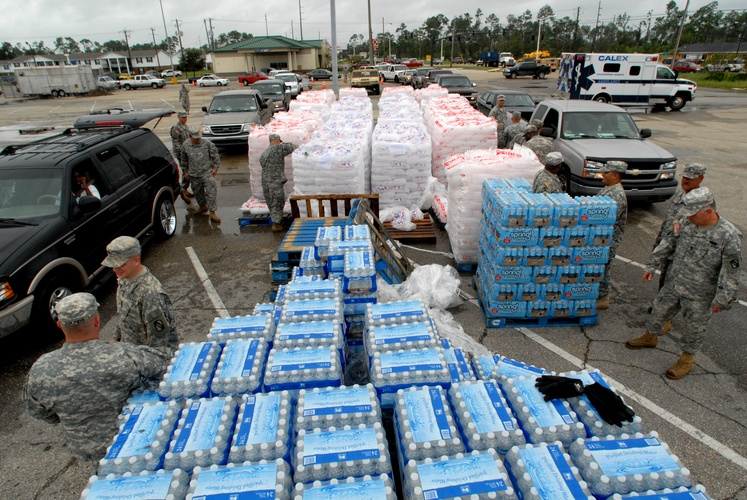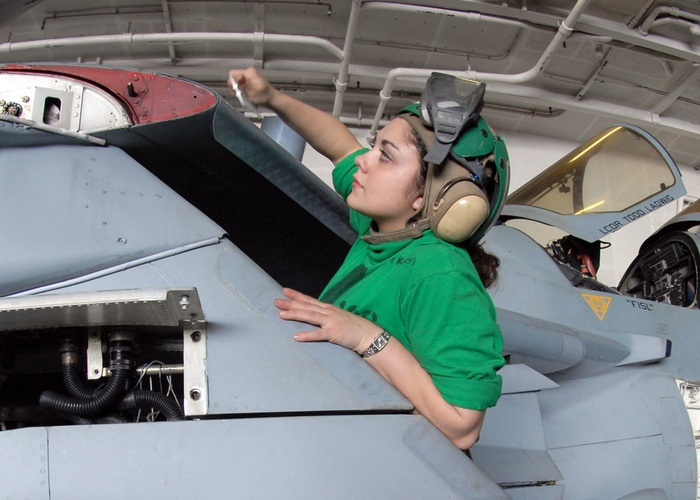The greatest war of the 20th Century was also the greatest in terms of lost human capital. However, it also ushered in the greatest boom in technological advances that the world has ever known. At the beginning of the war, many nations were still flying biplanes, and armor was basically an infantry support vehicle with thin skin and light armament.
Yet, by the end of six horrible years, we found the basis for nuclear energy, jet propulsion was in production military aircraft, rocket technology was nearing what would be required for space launch, and numerous other advancements that are still in use today.
For instance, the first production KC-135A Stratotankers were 1955 model years. The KC-135 remains the primary aerial refueling asset in the U.S. Air Force and is expected to remain in service until at least 2040, but it will probably go beyond that. There are pilots graduating UPT and assigned to the KC-135 that will probably retire before it does.

American weapon systems are used globally, but many foreign technologies and components are used on American aircraft through cooperative development. Let’s take a look at this and what it means.
What Are the International Armaments Cooperation Agreements?
National defense has long since ceased being strictly about what begins and ends at our borders. We have formed strategic partnerships throughout the entire world with nations who align with our values and are in positions to support our mission and vice versa.
This is largely the basis for foreign military sales; we have done most of the legwork for building the most sophisticated weapon systems in the world. Friendly nations can proceed to requisition American hardware rather than sink their own capital into R&D, manufacturing, etc. Many of these partner countries couldn’t manufacture anything to cover their demands if they wanted to.
Paralleling the FMS are International Armaments Cooperations. These are formally sanctioned agreements between the United States and partner nations. Since modern conflicts are almost never limited to two parties, with most involving international agreements. From this vantage point, cooperative research makes a lot of sense
Who Administers the IAC?
So, who exactly is responsible for administering the IAC? The program is a cooperative effort that, first and foremost, considers the best interests of the U.S. military. Partnering with compatible nations and supporting their militaries with materials, tech support, and training is a net win for us. It is a bargain compared to having to foot the bill completely on our own, so to speak.
The International Cooperation Office
The International Cooperation Office (ICO) is responsible for administering the IAC. It is located under the Undersecretary of Defense for Acquisition & Sustainment. The office aims to strengthen our key international partnerships worldwide by implementing cooperative Acquisition and Sustainment programs.
Our goal with the IAC is to
- Increase the lethality of our allies across the world.
- Increase the interoperability.
This is reminiscent of a lesson learned from World War II. There was no standardization in logistics, shipping containers, firearms and ammunition, etc. The end results were logistical nightmares. Allied troops would be running low on ammunition because their Enfield rifles used a different but almost identical caliber as the U.S.-standard issue M1 Garand. More of the same with aircraft, tanks, artillery, etc.
This is the exact reason many armaments have been standardized, from standard sidearm and small arms calibers to missiles, artillery, and tank ammunition.

How Does the IAC Affect Foreign Military Sales?
There is some obvious overlap between the IAC & FMS efforts because, ultimately, the IAC leads to FMS. The cooperations are entered because there is a great deal to be gained in the Coalition Warfare Program (CWP).
The CWP is another office within the ICO's purview tasked with leveraging U.S. and foreign investments to conduct cooperative research.
Positive Effects of International Armaments Cooperation
The positive effect of working together in International Armaments Cooperations is that the collective brain trust of R&D comes together from across the globe to improve upon weapons. This is particularly effective when partnering nations have highly compatible mission profiles.
The Coalition Warfare Program is a key part of this process, sorting through projects through a competitive process to find the best overall fit for the DoD.
Negative Effects of International Armaments Cooperation
Have you kept track of all the offices that directly and indirectly affect the research, development, funding, and procurement of military articles, technology, and services to foreign nations? Probably not, and that’s okay. It is a veritable spider web of different agencies that intertwine throughout the process.
And they don’t explicitly advertise their association with another department or agency. But it stands to reason that items designed and developed through IAC will eventually go through FMS, which is a completely different program, through a completely different cabinet-level department (the Department of State).
Factors Influencing Foreign Military Sales in Collaborative Programs
There are innumerable factors that influence FMS through collaborative programs, but it is important to recognize that the two things are not wedded. See, the FMS is a Department of State function, with the POTUS being the final authority on all FMS sales.
Collaborative programs are essentially R&D programs that exist to help us help them, so to speak. Many of our allies have comparable needs and mission profiles with their militaries, so it makes a lot of sense for our researchers to partner with them. However R&D does not necessarily influence foreign sales (although that is the end goal).
The main factor that influences the DoD on which nations and projects to partner with is what any given project and partnership does for the DoD. There is no sense in investing in pet projects that don’t move the needle for our defense technologies and our interests. Allied nations are a priority, but the interests of the U.S. come first. However, equipping our allies with compatible weapon systems or designing compatible weapon systems is a huge win in terms of interoperability.
One great example of this is the universal aerial refueling receptacle slipway installation (UARRSI). It enables foreign aircraft to take on fuel from U.S. tankers since maintaining a tanker task force is not fiscally attainable (or necessary) for many of our allies.
Parting Thoughts
There are a lot of benefits for our allied nations to work with the U.S. in acquisition and technology, and also vice versa. The end goal of R&D is to manufacture and ultimately sell products, and the world stage is an even better market to sell on than just the national stage. It is the responsibility of the producer to ensure that ITAR compliance is followed, and that FMS laws and regulations are abided by.
At Greenwood Aerospace, we have over four decades of experience working with the U.S. and Allied Nations on numerous global projects. We offer FMS sales and support services and have a proven record of efficiently handling FMS projects from start to finish.
It’s important to understand that FMS contracts don’t end when an aircraft is sold to a foreign country. Once the partner owns the aircraft or other equipment, they need significant, ongoing support. This may be in the form of:
- Personnel training
- Aircraft sustainment
- Spare and replacement parts
- Ongoing maintenance contracts
- And more
Coordination of all of these moving parts can be difficult. The aviation landscape is made up of parts suppliers, logistics channels, and maintenance consultants, but it can be difficult to connect all the dots to form a comprehensive package.
That’s where Greenwood Aerospace gets involved. As a military and defense contracting leader, our team can deliver the logistical support and coordination you need.
Contact contact@governmentprocurement.com to see what Greenwood Aerospace can do for you!


.svg)


.png)


